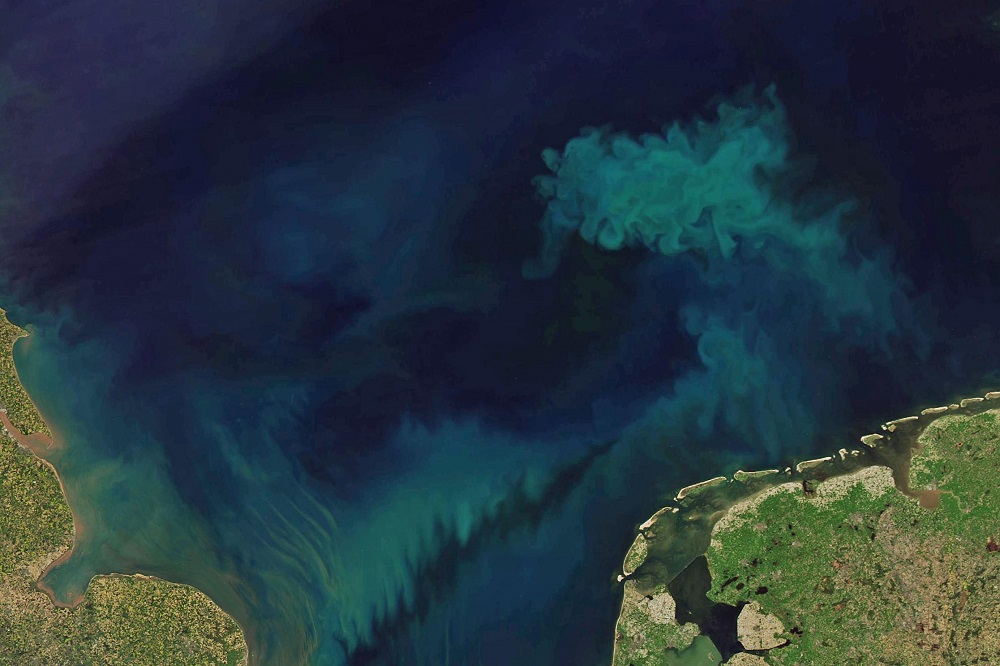Researchers are investigating exactly why this is happening and what it might signify.
More than half of the world’s oceans have become greener in the past 20 years, probably because of global warming. The discovery, reported today in Nature1, is surprising because scientists thought they would need many more years of data before they could spot signs of climate change in the colour of the oceans.
“We are affecting the ecosystem in a way that we haven’t seen before,” says lead author B. B. Cael, an ocean and climate scientist at the National Oceanography Centre in Southampton, UK.
The ocean can change colour for many reasons, such as when nutrients well up from its depths and feed enormous blooms of phytoplankton, which contain the green pigment chlorophyll. By studying the wavelengths of sunlight reflected off the ocean’s surface, scientists can estimate how much chlorophyll there is and thus how many living organisms such as phytoplankton and algae are present. In theory, biological productivity should change as ocean waters become warmer with climate change.
But the amount of chlorophyll in surface waters can vary markedly from year to year, making it hard to differentiate any changes induced by climate change from the big natural swings. Scientists thought it might take up to 40 years of observations to spot any trends2.
Another complicating factor is that numerous satellites have measured ocean colour over time, and each did so in a slightly different way, so the data cannot be combined. Cael’s team decided to analyse data from MODIS, a sensor aboard NASA’s Aqua satellite, which was launched in 2002 and is still orbiting Earth, far surpassing its anticipated six-year lifetime. The researchers looked for trends in seven different wavelengths of light from the ocean, rather than sticking with the single wavelength used to track the often-used single measure of chlorophyll. “I’ve thought for a long time that we could do better by looking at the full colour spectrum,” Cael says.
With two decades of MODIS data, the scientists were able to see long-term changes in ocean colour. They observed notable shifts in 56% of the world’s ocean surface, mostly in the waters between the latitudes of 40º S and 40º N. These tropical and subtropical waters generally don’t vary much in colour throughout the year, because the regions don’t experience extreme seasons — and so small long-term changes are more apparent there, Cael says.
The intensity of the colour change depends on the wavelength of light measured. In general, the waters are becoming greener over time.
To see if the shifts could be linked to climate change, the researchers compared the observations to the results of a model3 that simulated how marine ecosystems might respond to increasing levels of greenhouse gases in the atmosphere. The observed changes matched those in the model.
Shades of green
Now, the question is what is turning the oceans greener. It’s probably not a direct effect of increasing sea surface temperatures, Cael says, because the areas where colour change was observed do not match up with those where temperatures have generally risen. One possibility is that the shift might have something to do with how nutrients are distributed in the ocean. As surface waters warm, the upper layers of the ocean become more stratified, making it harder for nutrients to rise to the surface. When there are fewer nutrients, smaller phytoplankton are better at surviving than larger ones, and so changes in nutrient levels could lead to changes in the ecosystem that are reflected in changes in the water’s overall colour.
But this is just one idea; the researchers can’t yet say exactly why the changes are happening. “The reason we care about the colour is because the colour tells us something about what’s happening in the ecosystem,” Cael says.
Researchers
The discovery ramps up expectations for the next big mission to monitor ocean colour — NASA’s Plankton, Aerosol, Cloud, ocean Ecosystem (PACE) satellite. Set to launch in January 2024, PACE will measure ocean colour in many more wavelengths than any previous satellite, a capability known as ‘hyperspectral’.
“All of this definitely confirms the need for global hyperspectral missions such as PACE,” says Ivona Cetinić, an oceanographer at NASA’s Goddard Space Flight Center in Greenbelt, Maryland, who works on PACE. The spacecraft “should allow us to understand the ecological implications of the observed trends in ocean ecosystem structure in years to come.”

